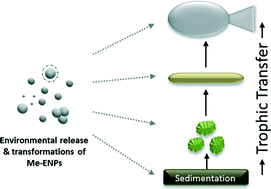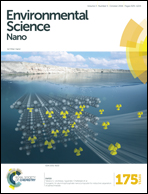Trophic transfer of metal-based nanoparticles in aquatic environments: a review and recommendations for future research focus
Abstract
Metal-containing engineered nanoparticles (Me-ENPs) are used in a wide range of products including inks, plastics, personal care products, clothing and electronic devices. The release of Me-ENPs has been demonstrated from some products, and thus, particles are likely to enter the aquatic environment where they have been shown to be taken up by a variety of species. Therefore, there is a possibility that Me-ENPs will enter and pass through aquatic food webs, but research on this topic is limited. In this tutorial review, we discuss the factors contributing to trophic transfer of Me-ENPs, and where this information is scarce, we utilize the existing literature on aqueous metal trophic transfer as a potential starting point for greater mechanistic insight and for setting directions for future studies. We identify four key factors affecting trophic transfer of Me-ENPs: (1) environmental transformations of Me-ENPs, (2) uptake and accumulation in prey organisms, (3) internal fate and localization in the prey, and (4) digestive physiology of the predator. Whilst much research has been conducted on the first two of these factors, key knowledge gaps exist in our understanding of how Me-ENP trophic transfer is affected by the internal distribution in prey organisms and the digestive physiology of the predator. Additionally, we suggest that the ENP association with sediments may be a key process that results in the transfer of intact particles within aquatic food webs.



 Please wait while we load your content...
Please wait while we load your content...